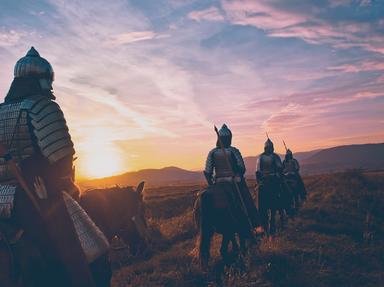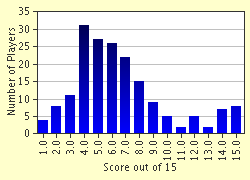Quiz Answer Key and Fun Facts
1. This prominent Chinese philosopher and leader was prime minister of Qin during the fourth century BCE. He introduced a range of reforms that allowed Qin to become one of the most powerful nations in China, and consequently the world. In addition to these achievements he also wrote a manifesto on Legalist philosophy, which reveals a cold, calculating and utterly ruthless mind. Who is being referred to?
2. According to legend this man became the first emperor of Japan in 660 BCE.
3. Taking place in 218 BCE and sharing its name with a battle in the same region that took place during the Revolutionary Wars (fought in 1799), this battle was fought between Captain Sempronius Longus (commanding the Roman army) and General Hannibal Barca (commanding the Carthaginian army). It was part of the Second Punic War and Hannibal's invasion of the Italian Peninsula. Which battle is this?
4. Attila's attempt to defeat the Western Roman Empire culminated in 451 CE in a massive battle involving upwards of 100,000 men. He fought against the Roman consul, Flavius Aetius, and his Gothic ally, King Theodoric. Theodoric was killed in the battle, but Aetius was able to secure victory against the hitherto invincible Hunnic hordes. This earned him the name "the last of the Romans". Which battle is being referred to?
5. Another question on ancient Rome - this time dealing with the Eastern half of the empire. The Emperor in question is perhaps the most famous of the Eastern Roman Emperors. Born in 483, he reigned from 527 until his death in 565. He is most famous for his reforms of the legal system (later his laws were used as the basis of the Napoleonic Code, which is still used in many nations across the world today) and his expansion of the Eastern Empire as part of his ambition to recover the fallen Western Empire from the barbarian kingdoms. His two most famous generals were Belisarius and Narses, both of whom played a large part in his military campaigns.
6. This megalomaniacal emperor of the Sui Empire was responsible for massive construction projects that ultimately required some eight million workers. He also sent upwards of three million men to fight against the north Korean kingdom of Koguryo in successive campaigns. The combination of these massive projects bankrupted the empire and triggered large rebellions and the eventual assassination of this emperor. Who is being referred to?
7. Grandson of Genghis Khan and commander of an army of more than 130,000 men, which Mongol Khan was entrusted by the Great Khan with the invasion of Europe from 1235?
8. Which state was founded in northern India in 1526 by Babur?
9. In Sengoku Era Japan two daimyo waged almost constant war against each other for most of the duration of their reigns. These two men are recognised as the most persistent rivals in Japanese history. Who were they?
10. Which treaty ended the long and bloody Thirty Years' War and brought about international recognition of the Swiss Confederation and the United Provinces (the Netherlands) in 1648?
11. When was the French emperor, Napoléon I, born?
12. The largest battle in European history until 1914 and the direct cause of Napoléon's downfall was which battle?
13. In which year did Simón Bolívar publish his famous 'Cartagena Manifesto'?
14. The Chinese generalissimo Zeng Guofan was an important figure in which major conflict?
15. Who, amongst the following, failed to assassinate a US president?
Source: Author
Findlay
This quiz was reviewed by FunTrivia editor
bloomsby before going online.
Any errors found in FunTrivia content are routinely corrected through our feedback system.


